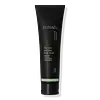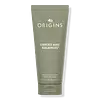What's inside
What's inside
 Key Ingredients
Key Ingredients

 Benefits
Benefits

 Concerns
Concerns

 Ingredients Side-by-side
Ingredients Side-by-side

Water
Skin ConditioningSodium Methyl Cocoyl Taurate
CleansingSodium Lauryl Sulfoacetate
CleansingSodium C14-16 Olefin Sulfonate
CleansingDecyl Glucoside
CleansingCocamidopropyl Betaine
CleansingGlycerin
HumectantPropanediol
SolventAloe Barbadensis Leaf Juice
Skin ConditioningMagnesium Aluminum Silicate
AbsorbentKaolin
AbrasivePerlite
AbsorbentSalicylic Acid
MaskingCocamidopropyl Dimethylamine
EmulsifyingSorbeth-230 Tetraoleate
EmulsifyingSorbitan Laurate
EmulsifyingArgania Spinosa Kernel Oil
EmollientStearyl Stearate
EmollientEuphorbia Cerifera Wax
Jojoba Esters
EmollientRicinus Communis Seed Oil
MaskingPhenoxyethanol
PreservativeEthylhexylglycerin
Skin ConditioningXanthan Gum
EmulsifyingLithium Magnesium Sodium Silicate
AbsorbentTetrasodium Pyrophosphate
BufferingArginine
MaskingMenthol
MaskingMelaleuca Alternifolia Leaf Oil
AntioxidantSodium Benzoate
MaskingCitric Acid
BufferingCI 77891
Cosmetic ColorantDisodium EDTA
Tocopherol
AntioxidantWater, Sodium Methyl Cocoyl Taurate, Sodium Lauryl Sulfoacetate, Sodium C14-16 Olefin Sulfonate, Decyl Glucoside, Cocamidopropyl Betaine, Glycerin, Propanediol, Aloe Barbadensis Leaf Juice, Magnesium Aluminum Silicate, Kaolin, Perlite, Salicylic Acid, Cocamidopropyl Dimethylamine, Sorbeth-230 Tetraoleate, Sorbitan Laurate, Argania Spinosa Kernel Oil, Stearyl Stearate, Euphorbia Cerifera Wax, Jojoba Esters, Ricinus Communis Seed Oil, Phenoxyethanol, Ethylhexylglycerin, Xanthan Gum, Lithium Magnesium Sodium Silicate, Tetrasodium Pyrophosphate, Arginine, Menthol, Melaleuca Alternifolia Leaf Oil, Sodium Benzoate, Citric Acid, CI 77891, Disodium EDTA, Tocopherol
Water
Skin ConditioningSilica
AbrasiveCI 77220
Cosmetic ColorantGlycerin
HumectantStearic Acid
CleansingCetyl Esters
EmollientCetyl Alcohol
EmollientCaprylic/Capric Triglyceride
MaskingKaolin
AbrasivePotassium Stearate
CleansingGlyceryl Caprylate
EmollientDecyl Glucoside
CleansingMentha Viridis Leaf Oil
AstringentCitrus Aurantium Bergamia Fruit Oil
MaskingLavandula Hybrida Oil
EmollientPelargonium Graveolens Flower Oil
MaskingAnthemis Nobilis Flower Oil
MaskingStyrax Benzoin Gum
MaskingLimonene
PerfumingLinalool
PerfumingBambusa Arundinacea Stem Extract
Skin ConditioningTourmaline
Sodium Hyaluronate
HumectantLaminaria Saccharina Extract
Skin ProtectingGlycine Soja Oil
EmollientSucrose
HumectantCaprylyl Glycol
EmollientCaffeine
Skin ConditioningEthylhexylglycerin
Skin ConditioningButylene Glycol
HumectantTocopherol
AntioxidantXanthan Gum
EmulsifyingPEG-100 Stearate
Magnesium Aluminum Silicate
AbsorbentBentonite
AbsorbentSodium Phytate
Phenoxyethanol
PreservativeCI 77891
Cosmetic ColorantAquilaria Agallocha Wood Oil
MaskingWater, Silica, CI 77220, Glycerin, Stearic Acid, Cetyl Esters, Cetyl Alcohol, Caprylic/Capric Triglyceride, Kaolin, Potassium Stearate, Glyceryl Caprylate, Decyl Glucoside, Mentha Viridis Leaf Oil, Citrus Aurantium Bergamia Fruit Oil, Lavandula Hybrida Oil, Pelargonium Graveolens Flower Oil, Anthemis Nobilis Flower Oil, Styrax Benzoin Gum, Limonene, Linalool, Bambusa Arundinacea Stem Extract, Tourmaline, Sodium Hyaluronate, Laminaria Saccharina Extract, Glycine Soja Oil, Sucrose, Caprylyl Glycol, Caffeine, Ethylhexylglycerin, Butylene Glycol, Tocopherol, Xanthan Gum, PEG-100 Stearate, Magnesium Aluminum Silicate, Bentonite, Sodium Phytate, Phenoxyethanol, CI 77891, Aquilaria Agallocha Wood Oil
Ingredients Explained
These ingredients are found in both products.
Ingredients higher up in an ingredient list are typically present in a larger amount.
Ci 77891 is a white pigment from Titanium dioxide. It is naturally found in minerals such as rutile and ilmenite.
It's main function is to add a white color to cosmetics. It can also be mixed with other colors to create different shades.
Ci 77891 is commonly found in sunscreens due to its ability to block UV rays.
Learn more about CI 77891Decyl Glucoside is a glucose-based surfactant and emulsion stabilizer. It is created by reacting glucose with the fatty acids from plants.
Surfactants help clean the skin by trapping oil, sebum, and dirt to be washed away. As an emulsion stabilizer, it stabilizes the ingredients in a product by preventing them from separating.
This ingredient is biodegradable and non-toxic. This ingredient is commonly found in baby shampoos.
Decyl Glucoside is sometimes used to stabilize the UV filter Tinosorb.
Learn more about Decyl GlucosideEthylhexylglycerin (we can't pronounce this either) is commonly used as a preservative and skin softener. It is derived from glyceryl.
You might see Ethylhexylglycerin often paired with other preservatives such as phenoxyethanol. Ethylhexylglycerin has been found to increase the effectiveness of these other preservatives.
Glycerin is already naturally found in your skin. It helps moisturize and protect your skin.
A study from 2016 found glycerin to be more effective as a humectant than AHAs and hyaluronic acid.
As a humectant, it helps the skin stay hydrated by pulling moisture to your skin. The low molecular weight of glycerin allows it to pull moisture into the deeper layers of your skin.
Hydrated skin improves your skin barrier; Your skin barrier helps protect against irritants and bacteria.
Glycerin has also been found to have antimicrobial and antiviral properties. Due to these properties, glycerin is often used in wound and burn treatments.
In cosmetics, glycerin is usually derived from plants such as soybean or palm. However, it can also be sourced from animals, such as tallow or animal fat.
This ingredient is organic, colorless, odorless, and non-toxic.
Glycerin is the name for this ingredient in American English. British English uses Glycerol/Glycerine.
Learn more about GlycerinKaolin is a clay. It is used for oil control and to help minimize pores. Like other clays, kaolin has the ability to absorb excess sebum or oil. This can help clean out pores and mattify the skin.
Some types of kaolin may have exfoliating properties. When water is added to kaolin, it becomes a paste with small abrasive particles.
Most kaolin is a white color, but may be pink/orange/red depending on where it comes from.
The name 'kaolin' comes from a Chinese village named 'Gaoling'. Kaolin clay comes from rocks rich in kaolinite. Kaolinite, the mineral, has a silicate layered structure. Kaolinite is formed from chemical weathering of aluminum siilicate minerals.
Besides skincare, kaolin is commonly used to make glossy paper, in ceramics, toothpaste, and as medicine to soothe stomach issues.
Learn more about KaolinMagnesium Aluminum Silicate is a type of silica. It comes from naturally occuring minerals such as silicate ores and clay.
Magnesium aluminum silicate is used for enhancing texture and as an absorbent. Due to its large molecular size, it is unable to be absorbed into the skin.
Like other types of silica, this ingredient can be used to thicken a product. As an absorbent, it may be used to absorb extra water or help prevent clumping.
Although “aluminum” in an ingredient name can raise red flags for some consumers, the form and usage context matter significantly. For typical topical applications, there is no substantial evidence of health risks - such as cancer, neurotoxicity, or systemic “aluminum overload.”
Learn more about Magnesium Aluminum SilicatePhenoxyethanol is a preservative that has germicide, antimicrobial, and aromatic properties. Studies show that phenoxyethanol can prevent microbial growth. By itself, it has a scent that is similar to that of a rose.
It's often used in formulations along with Caprylyl Glycol to preserve the shelf life of products.
Tocopherol (also known as Vitamin E) is a common antioxidant used to help protect the skin from free-radicals and strengthen the skin barrier. It's also fat soluble - this means our skin is great at absorbing it.
Vitamin E also helps keep your natural skin lipids healthy. Your lipid skin barrier naturally consists of lipids, ceramides, and fatty acids. Vitamin E offers extra protection for your skin’s lipid barrier, keeping your skin healthy and nourished.
Another benefit is a bit of UV protection. Vitamin E helps reduce the damage caused by UVB rays. (It should not replace your sunscreen). Combining it with Vitamin C can decrease sunburned cells and hyperpigmentation after UV exposure.
You might have noticed Vitamin E + C often paired together. This is because it is great at stabilizing Vitamin C. Using the two together helps increase the effectiveness of both ingredients.
There are often claims that Vitamin E can reduce/prevent scarring, but these claims haven't been confirmed by scientific research.
Learn more about TocopherolWater. It's the most common cosmetic ingredient of all. You'll usually see it at the top of ingredient lists, meaning that it makes up the largest part of the product.
So why is it so popular? Water most often acts as a solvent - this means that it helps dissolve other ingredients into the formulation.
You'll also recognize water as that liquid we all need to stay alive. If you see this, drink a glass of water. Stay hydrated!
Learn more about WaterXanthan gum is used as a stabilizer and thickener within cosmetic products. It helps give products a sticky, thick feeling - preventing them from being too runny.
On the technical side of things, xanthan gum is a polysaccharide - a combination consisting of multiple sugar molecules bonded together.
Xanthan gum is a pretty common and great ingredient. It is a natural, non-toxic, non-irritating ingredient that is also commonly used in food products.
Learn more about Xanthan Gum